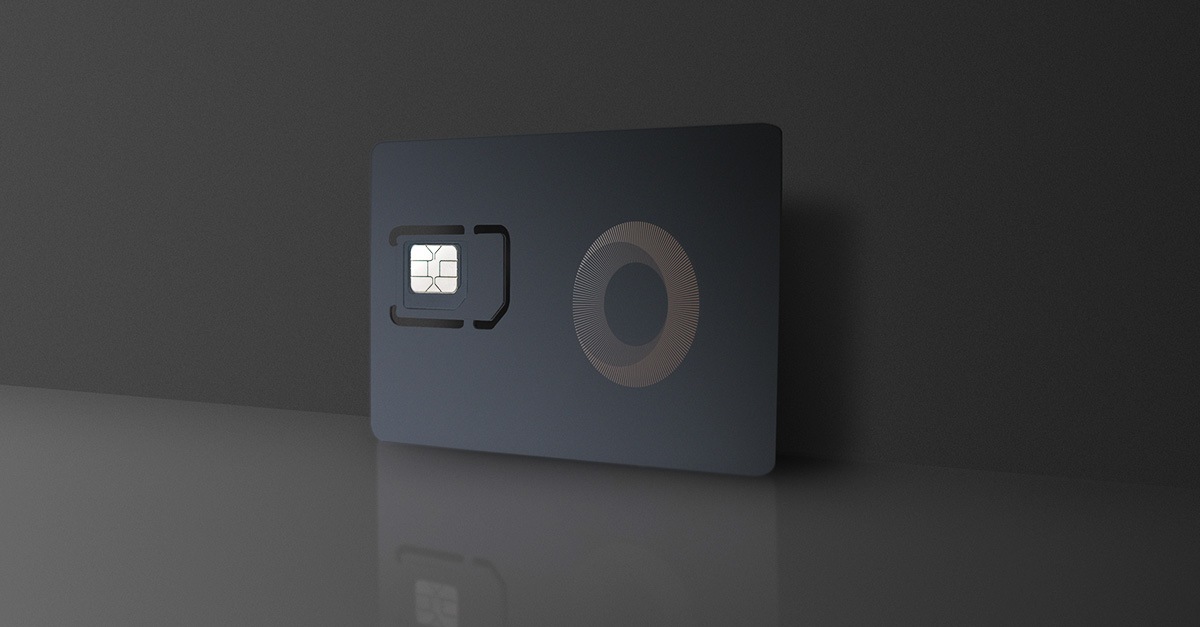Managed IoT Connectivity Platform Importance of Connectivity-as-a-Service for IoT
Managed IoT Connectivity Platform Importance of Connectivity-as-a-Service for IoT
Blog Article
IoT Connectivity Provider Comprehensive Guide to IoT Connectivity Technologies
As the demand for the Internet of Things (IoT) continues to grow, so does the want to perceive the various connectivity options available. Two major classes of connectivity typically beneath discussion are cellular and non-cellular IoT connectivity. Each has its personal strengths and weaknesses, and the choice between them can significantly influence the efficiency and efficiency of IoT applications.
Cellular IoT connectivity leverages established cellular networks to facilitate communication between gadgets. This kind of connectivity usually options a quantity of subcategories, including 2G, 3G, 4G, and now 5G technologies. Cellular networks supply widespread coverage, making them appropriate for applications that require mobility and extended vary. The in depth infrastructure already in place permits for speedy deployment, saving time and resources.
IoT Connectivity Control Definition of Internet of Things
Moreover, cellular connectivity often comes with robust security measures. The use of encryption and authenticated entry provides a layer of safety that's crucial for a lot of functions, especially in sectors coping with sensitive data like healthcare and finance. This ensures that information transmitted between units and networks is secure from potential cyber threats.
On the opposite hand, non-cellular IoT connectivity encompasses a variety of other technologies, including Wi-Fi, LoRaWAN, Zigbee, and Bluetooth. These choices can range significantly by means of range, data charges, and energy consumption. Non-cellular options typically give attention to specific environments, such as home automation or industrial settings, where localized communication is extra practical.

Non-cellular connectivity solutions are usually less expensive in environments the place intensive cellular protection may not be necessary. They can also be simpler to implement in smart buildings or localized networks. For occasion, Wi-Fi offers high information rates and helps an enormous variety of units but is limited by vary and protection.
Cloud Connectivity In IoT Survey on IoT Connectivity Technologies and Applications
LoRaWAN, another popular non-cellular know-how, is designed specifically for long-range communication whereas consuming minimal energy. This makes it best for applications requiring low knowledge rates over prolonged distances, such as agricultural sensors or smart metropolis infrastructure. The trade-off comes in its lower data price compared to cellular solutions, which may not be appropriate for functions requiring real-time information transmission.
In contrast, cellular networks excel in functions that demand consistent connectivity over longer distances, like logistics and fleet management. The capability to maintain a connection on the move is critical for functions that contain tracking automobiles or assets throughout wide geographical areas. Additionally, roaming capabilities between totally different cellular networks improve connectivity for mobile applications.
IoT Connectivity Technologies Market for IoT Connectivity Management Platforms
Another issue to consider is the maturity of the know-how. Cellular networks have been round for many years, benefiting from steady advancements. Meanwhile, non-cellular technologies are relatively newer and should not have the same degree of reliability and robustness as cellular methods. Many organizations may find comfort and assurance in the tried-and-true nature of cellular connectivity, especially for crucial applications.
However, as IoT continues to evolve, so do non-cellular technologies. Ongoing developments in wireless standards are considerably enhancing the capabilities and performance of non-cellular choices. With developments in Low Power Wide Area Network (LPWAN) technologies, there is increasing interest amongst builders and companies seeking to deploy IoT gadgets that require much less energy and wider protection at a decrease cost. IoT Sim Connectivity.
Nb-IoT Connectivity Providers of Cellular IoT Connectivity

The panorama of IoT connectivity is ever-changing, which makes the choice between cellular and non-cellular connectivity extremely context-dependent. look at more info Various components, including the specific application requirements, protection needs, cost constraints, and security issues, strongly influence this alternative. The right connectivity possibility can enhance operational effectivity, improve information collection, and provide timely insights for decision-making.
When evaluating which choice fits greatest, it is essential to evaluate not solely the instant needs but in addition the lengthy run progress potential of the application. In some instances, hybrid options that leverage each cellular and non-cellular connectivity may provide the most effective of both worlds. For occasion, an software might utilize cellular connectivity for broader data transmission and non-cellular choices for localized, low-power communications.
Nb-IoT Connectivity Tips for Choosing IoT Connectivity Solutions
The rise of 5G expertise further complicates the landscape but also provides opportunities for each cellular and non-cellular options. With its potential for ultra-low latency and high information charges, 5G might increase the viability of cellular IoT for functions that beforehand relied on non-cellular solutions. Yet, non-cellular technologies continue to improve, carving out niches that cellular networks could not optimally serve.
In closing, cellular vs. non-cellular IoT connectivity presents a posh choice with far-reaching implications. Each connectivity sort brings unique advantages and limitations that cater to various application wants. As IoT expertise advances and matures, the final word choice hinges on particular project necessities, use cases, and future scalability concerns. Understanding the nuances of each option can present the necessary perception to make an knowledgeable choice, paving the best way for profitable IoT deployments (IoT Connectivity Comparison).
- Cellular IoT connectivity makes use of established cellular networks, providing broad coverage and dependable indicators in urban and rural areas.
- Non-cellular IoT connectivity, similar to LPWAN (Low Power Wide Area Network), is specifically designed for low-bandwidth applications, prioritizing energy effectivity over velocity.
- In cellular networks, knowledge switch rates could be higher, supporting functions that require real-time data transmission, corresponding to video surveillance or autonomous automobiles.
- Non-cellular solutions typically have longer battery life, making them best for units requiring minimal maintenance, like environmental sensors and smart meters.
- Cellular IoT typically entails greater operational prices because of subscription fees and knowledge plans, whereas non-cellular options may be cheaper for big deployments.
- Security protocols in cellular networks are strong, benefiting from the infrastructure of established telecommunication providers.
- Non-cellular technologies can employ simpler and more localized safety measures, probably resulting in vulnerabilities in sure implementations.
- Scalability is generally easier with cellular networks, which can support a vast number of devices concurrently with out significant degradation in performance.
- Non-cellular IoT might offer higher flexibility in network design, allowing businesses to tailor solutions specifically to their operational wants with out reliance on a mobile service.
- Depending on the applying, hybrid models integrating each cellular and non-cellular connectivity can optimize overall performance and cost-efficiency.undefinedWhat is the distinction between cellular and non-cellular IoT connectivity?undefinedCellular IoT connectivity makes use of mobile networks (like 4G or 5G) for information transmission, whereas non-cellular options include technologies like Wi-Fi, BLE (Bluetooth Low Energy), and LoRaWAN, which function independently of mobile service networks.
When is it best to use cellular IoT connectivity?undefinedCellular connectivity is ideal for functions requiring broad protection, mobility, and real-time information transmission, corresponding to vehicle tracking or smart wearables, the place reliability and speed are important.
IoT Connectivity Management Platform Overview and Definition of IoT Connectivity
What are some nice benefits of non-cellular IoT connectivity?undefinedNon-cellular choices are sometimes more cost-effective for functions with lower data transmission wants, similar to smart home devices or environmental sensors, they usually can utilize Check Out Your URL present infrastructure like Wi-Fi networks.

How do prices examine between cellular and non-cellular IoT connectivity?undefinedCellular options typically contain ongoing subscription fees for community entry, whereas non-cellular technologies usually incur decrease preliminary costs and fewer recurring expenses, making them economical for certain use instances.
Can I change from non-cellular to cellular IoT connectivity later?undefinedYes, many units are designed with flexibility in thoughts, permitting for upgrades or changes from non-cellular to cellular connectivity if future needs dictate a necessity for broader coverage or higher reliability.
What kind of devices are best suited for cellular IoT connectivity?undefinedDevices that require fixed connectivity, such as fleet management systems, remote monitoring instruments, and telehealth purposes, sometimes profit most from cellular networks due to their in depth protection and assist for mobility.
Managed IoT Connectivity Platform Common IoT Connectivity Technologies and Use Cases
Are there limitations to utilizing non-cellular IoT connectivity?undefinedYes, non-cellular connectivity can face limitations like vary (for technologies like BLE), reliance on local networks (Wi-Fi), and fewer ability to support cellular applications, making them less perfect for sure situations that demand reliability.
What safety considerations should I remember for either connectivity type?undefinedCellular networks generally present built-in safety measures, but non-cellular options could be more vulnerable to local threats. IoT Connectivity Platform. Always use encryption and safe authentication methods to mitigate dangers throughout both kinds of connectivity.
How does latency evaluate between cellular and non-cellular IoT connectivity?undefinedCellular networks usually have lower latency, making them suitable for real-time functions, whereas non-cellular options might experience larger latency, particularly with larger networks or crowding, which may impression performance.
Report this page